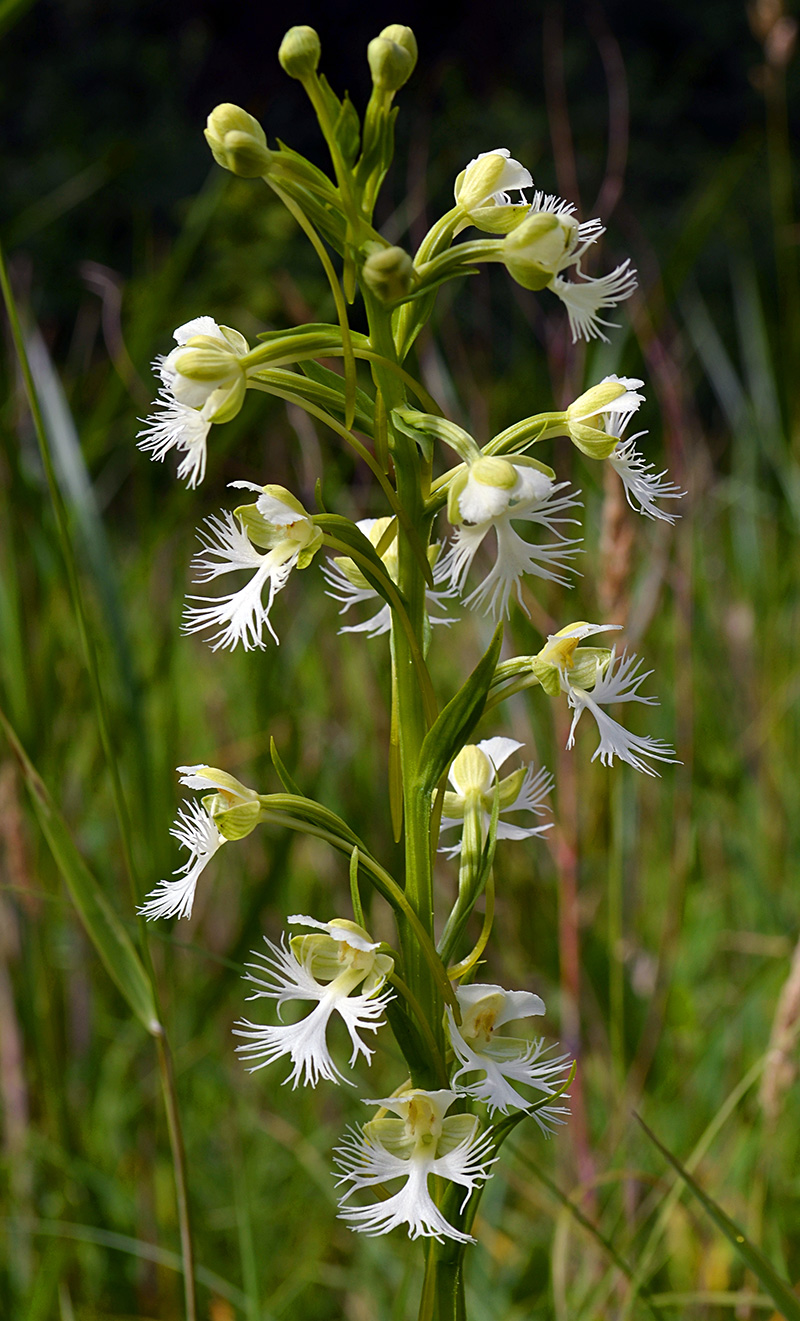Plant of the Week
 Platanthera leucophaea range map. USDA PLANTS Database.
Platanthera leucophaea range map. USDA PLANTS Database.
 Eastern Prairie Fringed Orchid (Platanthera leucophaea) flower
Eastern Prairie Fringed Orchid (Platanthera leucophaea) flower
 Eastern Prairie Fringed Orchid (Platanthera leucophaea) leaves and plant stem
Eastern Prairie Fringed Orchid (Platanthera leucophaea) leaves and plant stem
Eastern Prairie Fringed Orchid
(Platanthera leucophaea)
By Christopher David Benda
A member of the Orchid family (Orchidaceae) and prairie rarity is the Eastern Prairie Fringed Orchid (Platanthera leucophaea). Platanthera means “flat anthers,” referring to the broad male reproductive parts of the flower. The species name “leucophaea” comes from the Greek words “leucon” for “white,” and “phaios” for “gray,’ and it refers to the creamy color of the racemes of flowers. The lowest petals on the flowers are fringed and this is a plant of the prairie, which explains the original name, prairie white fringed orchid. This species was later split into two species, and this one became the Eastern Prairie Fringed Orchid, and the other, the Western Prairie Fringed Orchid.
This perennial wildflower was once abundant across the tallgrass prairies of the Midwest. Most of this land has now been converted for agricultural use, and so this orchid is currently federally threatened. The orchid has a single, smooth stem with several leaves that are alternate, clasp the stem, and have parallel veins. The inflorescence is terminal with up to 20 flowers or more on each plant. The flowers have an upper lip shaped like a hood and a lower lip divided into 3 lobes with fringed margins.
The long nectar tube presents an interesting challenge to pollinators, now believed to be sphinx moths. These moths have a very long tongue that unravels when inserted into the nectar tube, allowing them to get the nectar at the bottom. These moths do their work at night. However, eastern prairie fringed orchid populations are so rare, the pollinators can’t seem to find the orchid flowers. Citizen scientists and biologists at the National Fish and Wildlife Service have stepped in to do the work of pollinators by using toothpicks to transfer pollinia between flowers in order to fertilize them.
This wildflower prefers wet habitats in full sun, like prairies and sedge meadows. It is rare throughout its range, which extends from Wisconsin south to Oklahoma, and east to New York, with disjunct populations in Maine and Virginia.


